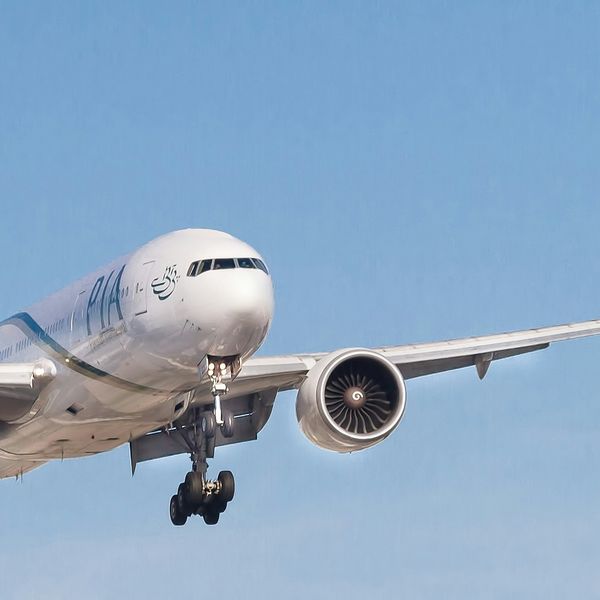24 and counting: Why does Pakistan keep going back to the IMF?
Since February 22, 1994, Pakistan has entered into five extended fund facility programs (EFF) with a total value of SDR 15,535 million
Nida Gulzar
Research Analyst
A distinguished economist with an M. Phil. in Applied Economics, Nida Gulzar has a strong research record. Nida has worked with the Pakistan Business Council (PBC), Pakistan Banks' Association (PBA), and KTrade, providing useful insights across economic sectors. Nida continues to impact economic debate and policy at the Economist Intelligence Unit (EIU) and Nukta. As a Women in Economics (WiE) Initiative mentor, she promotes inclusivity. Nida's eight 'Market Access Series papers help discover favourable market scenarios and export destinations.

Since 1994, Pakistan has entered into four extended fund facility programs with a total value of SDR 10,215 million
Ai
Pakistan has gone to the International Monetary Fund (IMF) 24 times since its independence. Will it finally be able to break this cycle and come out of the debt trap after implementing the latest reforms? The likely answer is no.
Over the last two years, Pakistan's twin deficits — fiscal and current account — have strangled the economy, causing it to rely heavily on external debt. According to IMF data, the debt-to-GDP ratio reached 77% in fiscal year 2022-23 (FY23), with external debt reaching $130 billion in FY24.
The country's economic situation worsened last year so drastically that it was struggling to bridge an external financing gap and on the verge of defaulting on its sovereign debt. The IMF had come to the rescue by approving a nine-month Stand-by Arrangement (SBA) for $3 billion in July 2023, of which $1.2bn was immediately disbursed post its Executive Board meeting.
Pakistan & IMF — a long history
Since February 22, 1994, Pakistan has entered into five extended fund facility programs (EFF) with a total value of SDR 15,535 million ($13.7 mn). It has drawn SDR 6,774 mn ($12 mn) or 66% of the agreed sum. The latest loan program is the country's 24th since 1958.
The latest EFF will enable Pakistan to continue servicing its external debt, unlock additional financing from other multilateral institutions and international private capital markets, along with bilateral support from key allies, notably China and Saudi Arabia. However, it still has a financing gap of $2-2.5bn, according to the IMF's estimates.
This is why there were delays in adding Pakistan to the IMF Executive Board's agenda. The government had claimed the approval would be received in August but the Fund had linked the approval to obtaining roll-overs worth $12bn and filling in the gap in projected revenue collection of PKR 11.2 trillion for the current fiscal year. Officials have stated that Pakistan could sign a Letter of Intent (LOI) after securing $1.2 bn Saudi Oil Facility (SOF) to bridge the financing gap.
On the plus side, SBP reserves have been steadily increasing since March and have reached $9.51bn as of Sept 30. This is because export earnings and foreign exchange accumulation have been going hand in hand. The fresh program would further scale up the foreign exchange reserves.
Latest reforms
As indicated by the government's austere budget for FY24, budgetary consolidation will be the primary emphasis of the reform conditions related to this loan. In this fiscal year, debt servicing is expected to account for approximately 50% of total government spending.
However, Pakistan's low tax-to-GDP ratio needs to be increased, and the government has pledged to do so under the EFF. Although tax collection improved by 29% in FY24 compared to the previous year, the tax-to-GDP ratio still hovers around 8%. In fact, tax revenue as a percentage of the economic output has never crossed 12% — any country hoping to have positive growth must target revenue to GDP of at least 15%.
For this, the government needs to increase engagement with traders, retailers, and wholesalers to eliminate tax evasion in the economy, as the shortfall for August stood at PKR 98bn.
Pakistan's inability to collect tax income has caused it to repeatedly return to the IMF and other lenders and if it wants to avoid a 25th program, this must change.
Despite the start of a rate-easing cycle in June, the country's central bank is likely to maintain a cautious monetary policy stance for the remainder of this year. As required by the IMF, this will be coupled with a flexible exchange rate framework and little central bank intervention in the foreign exchange market.
The 37-month-long EFF will alleviate pressures on the balance of payments and stabilize the external sector. The corresponding fiscal austerity measures, however, will reduce investment and consumer demand.
Historically, the inconsistent application of austerity measures has caused reform projects to stall. To achieve fiscal consolidation, Pakistan will be forced to continue with austerity measures, including raising electricity tariffs and fuel prices and privatizing debt-ridden state-owned enterprises (SOEs).







Comments
See what people are discussing